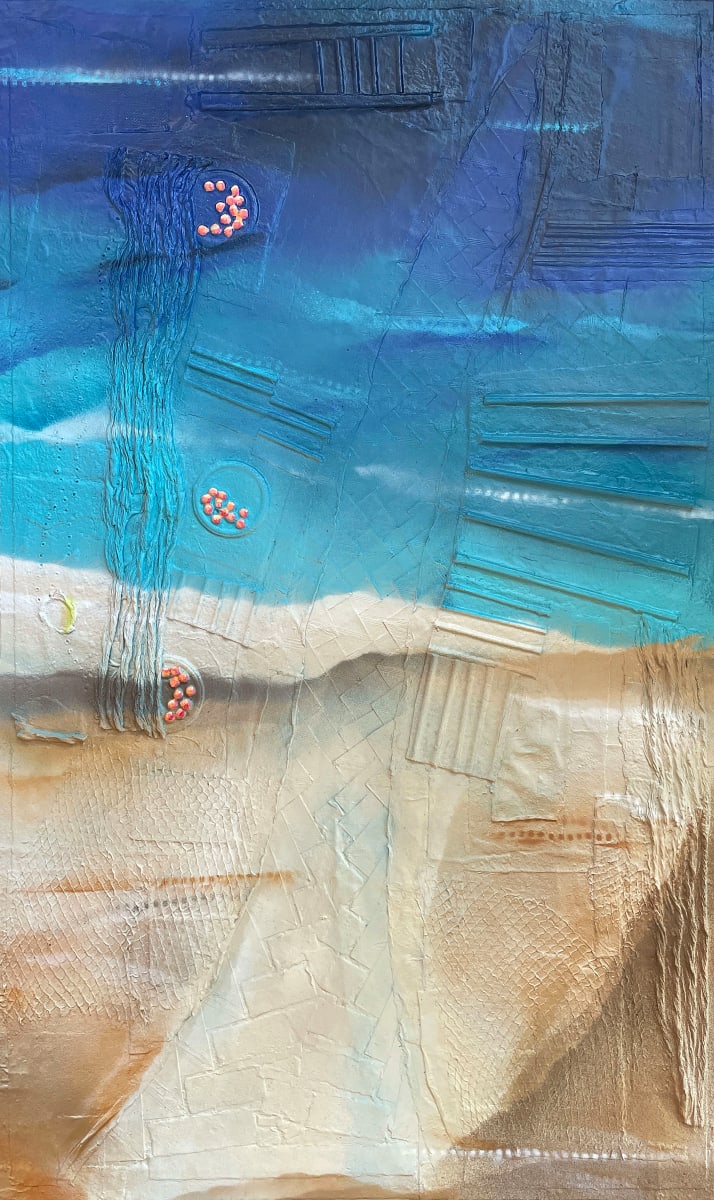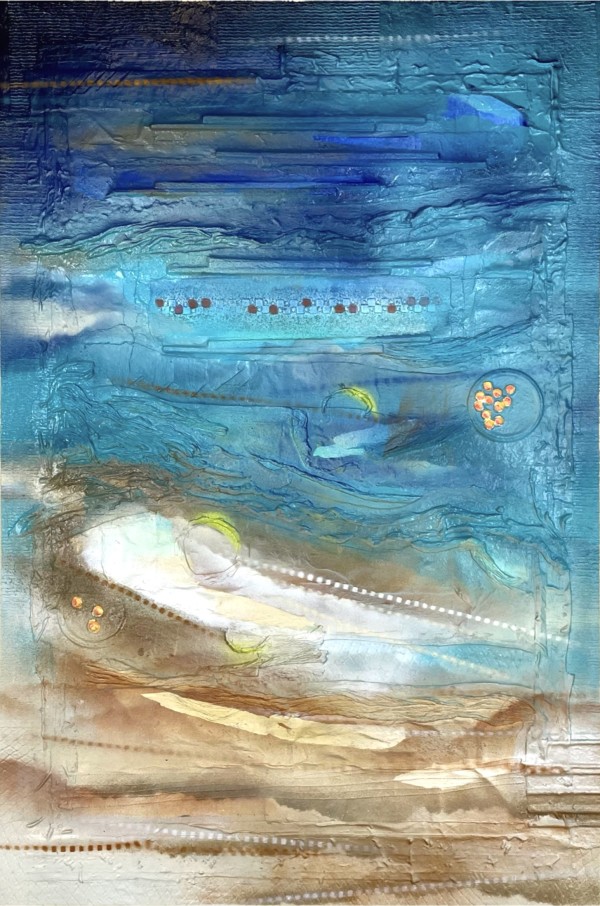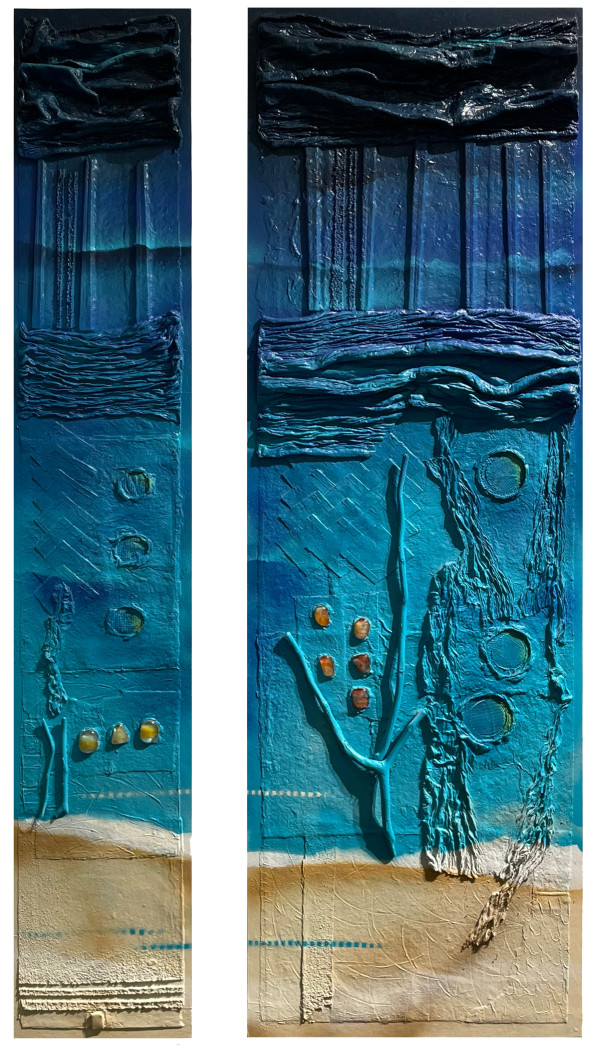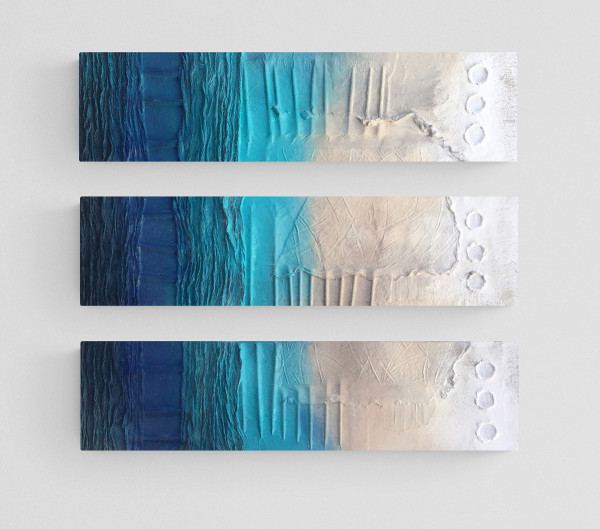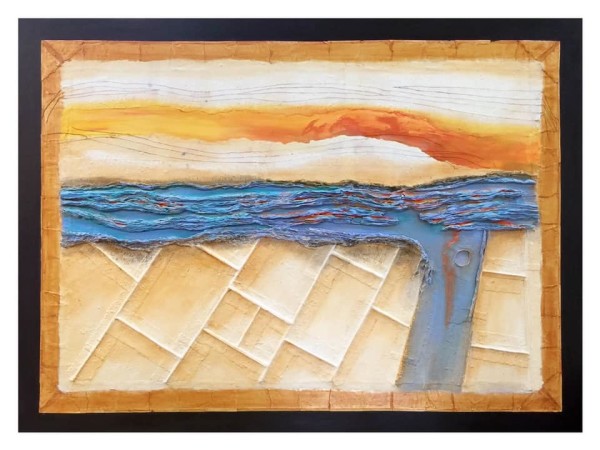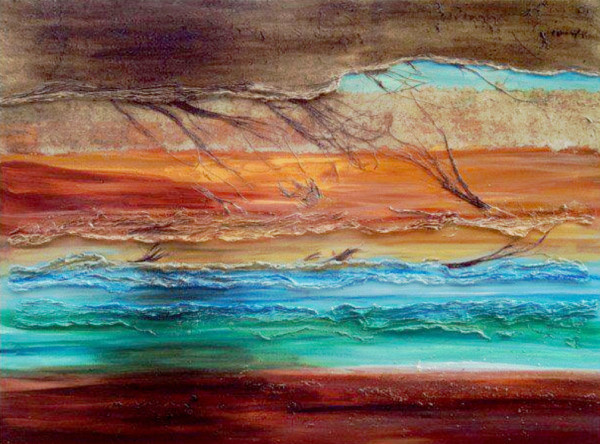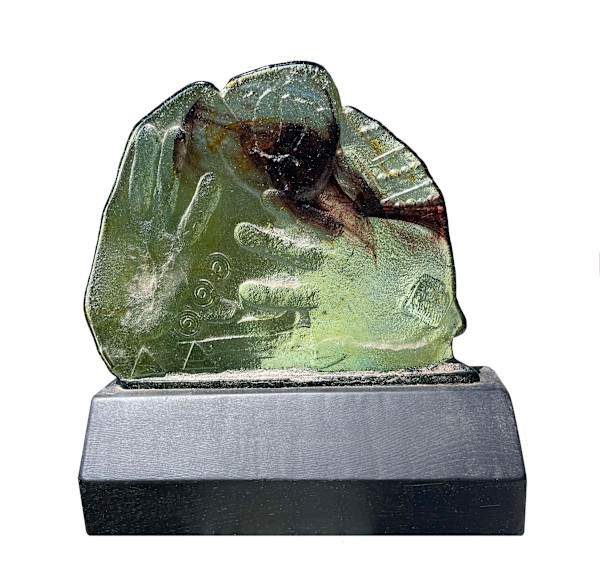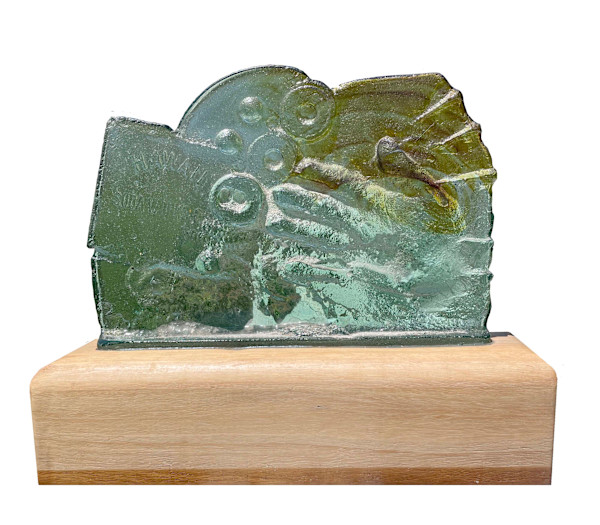An original highly textured oil painting depicting an aerial view of the blue hues where the vast ocean meets the sand by Hawaii artist J. Jay West.
From the artist : "I strive to bring awareness of the importance of our oceans, the blue heart of our planet. The ocean and the ever-changing wave patterns inspire me. I am mesmerized by the translucent and glimmering color palette found when viewing the ocean from the shoreline. Beached is part of my Standing Still collection. I feel we have reached a tipping point regarding the continued degradation of our environment. We are standing still in terms of world leaders doing the right thing for the future of humankind. We can go one way or another."
Jay's artistic journey is truly unique and environmentally conscious. Her ability to transform wet paper pulp and recycled materials into art that imitates ocean waves and coral is a testament to her creativity and dedication. The fact that her process involves meticulous planning, from initial drawings to resource procurement and material processing, highlights the thought and effort that goes into each of her pieces.
"Beached," one of her creations, seems to convey a powerful message about the state of coral reefs and the ocean's health. By incorporating abstract coral in different stages, from healthy to bleached and dying, Jay is likely drawing attention to the critical issue of coral reef degradation due to factors like climate change and pollution. Her art serves as a visual representation of the environmental challenges our oceans face.
It's artists like Jay who can use their talents to not only create beautiful works of art but also raise awareness about important global issues. Her commitment to using recycled materials and her meticulous creative process align with the growing movement towards sustainable and environmentally conscious art.
"Beached" is signed and dated on the back, gallery wrapped framing,, and ready to hang.
*Assemblage art"that is made by assembling disparate elements – often everyday objects. The use of assemblage as an approach to making art goes back to Pablo Picasso's cubist constructions, the three-dimensional works he began to make in 1912.
- Subject Matter: Beach, Climate Change, ocean
- Collections: Originals

